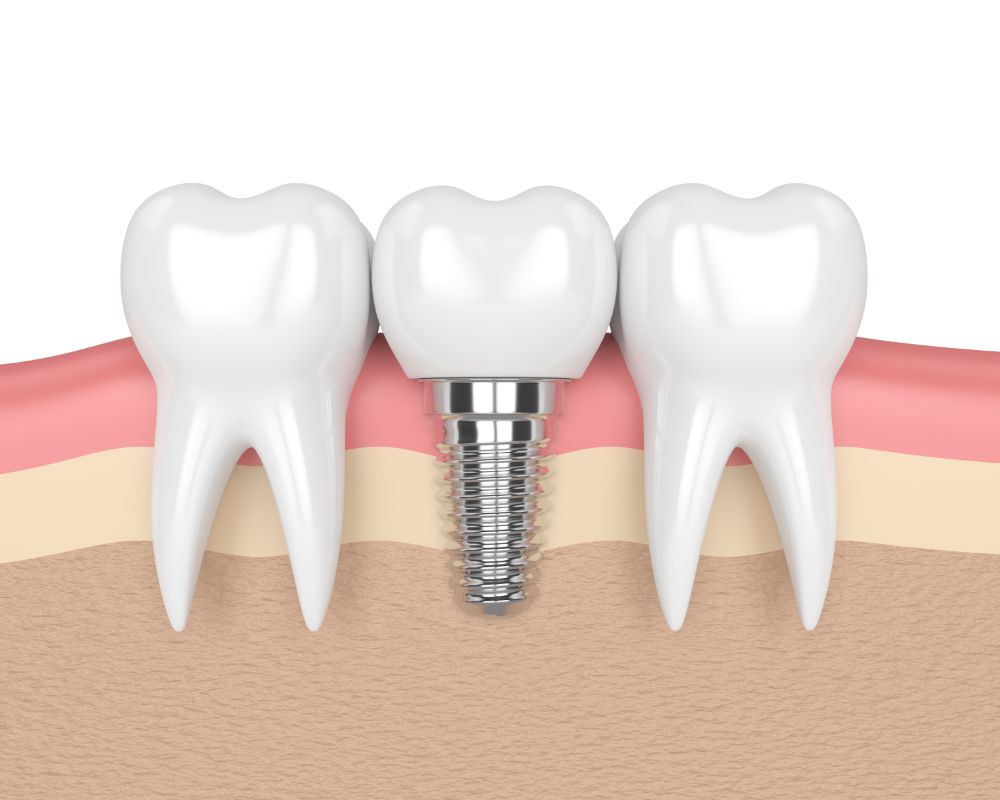Dental implants have revolutionized the field of cosmetic dentistry, providing a reliable solution for replacing missing teeth. A significant element that ensures the success of a dental implant is the dental implant abutment. This article will delve into the role of the dental implant abutment, its functions, types, and the part it plays in the success of dental implants.
Understanding the Dental Implant Abutment
The dental implant abutment, a key element of dental implants, functions as a bridge connecting the dental implant—a screw-type device inserted into the jawbone—and the artificial tooth. Crafted from hard-wearing materials such as ceramic or titanium, the abutment is designed to endure the forces of chewing.
During the dental implant procedure, the implant is typically enveloped by gum tissue, initiating a fusion process with the bone known as osseointegration. After the implant has successfully integrated with the jawbone—a process that may span several weeks or even months—the abutment is affixed. Subsequently, the dental crown, mirroring the visible segment of a natural tooth, is positioned.
The dental implant abutment holds a crucial role in securing the artificial tooth firmly. It also shapes the surrounding gum tissue in a visually appealing and natural way, contributing to the overall triumph of the dental implant operation.
Types of Dental Implant Abutments
There are various types of abutments available, each designed to accommodate different patient needs, dental conditions, and aesthetic preferences. The most common ones include stock abutments and custom abutments.
Stock abutments are pre-fabricated and come in various shapes and sizes. They are widely used due to their availability and cost-effectiveness. However, they might not always provide the best fit or aesthetic result, especially in the anterior region where the gum line is visible during smiling or speaking.
On the other hand, custom abutments are designed individually for each patient using impressions or digital scans of the patient’s mouth. They provide a better fit and more natural aesthetic result but are more expensive and take longer to fabricate. The choice between a stock and custom abutment often depends on the patient’s specific needs and the dentist’s clinical judgment.
The Role of Dental Implant Abutment in Aesthetics
Aesthetic outcome is a vital consideration in cosmetic dentistry. The dental implant abutment significantly influences the final aesthetic result of the dental implant. As it helps shape the gum tissue around the implant, the abutment plays a crucial role in creating a natural-looking transition between the artificial tooth and the gum tissue.
A well-designed abutment can mimic the shape of a natural tooth root emerging from the gum, leading to a more aesthetically pleasing result.
Importance of Dental Implant Abutment in Long-Term Success
The long-term success of a dental implant is contingent on various factors, including the design and fit of the dental implant abutment. An abutment that fits well minimizes micro-movements at the connection between the implant and the abutment, reducing the risk of implant failure. Furthermore, the material of the abutment plays a role in the implant’s longevity. Certain materials, like zirconia, are more susceptible to fracturing under high chewing forces. Therefore, it’s crucial to select the appropriate abutment that matches the patient’s functional demands and aesthetic needs.

